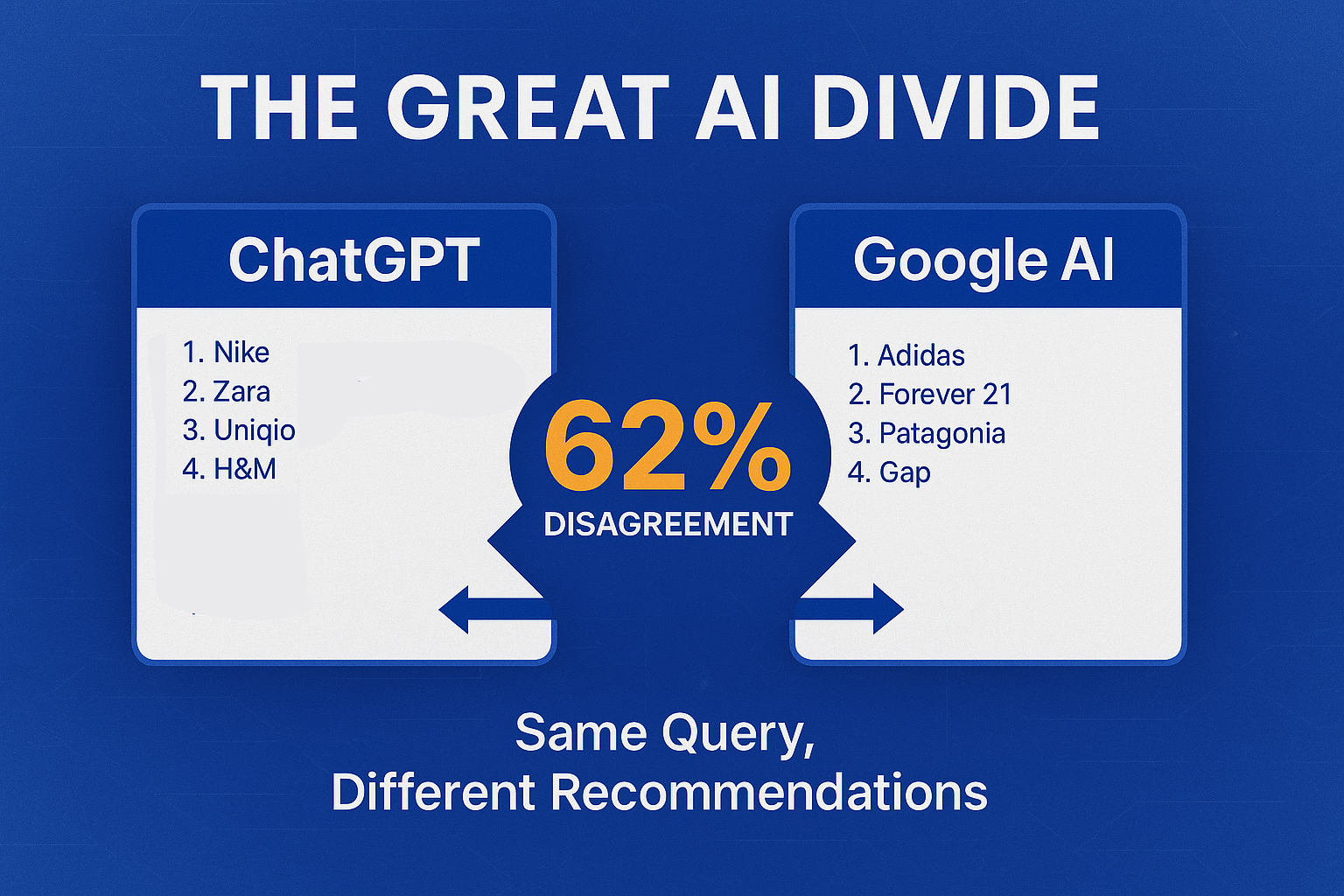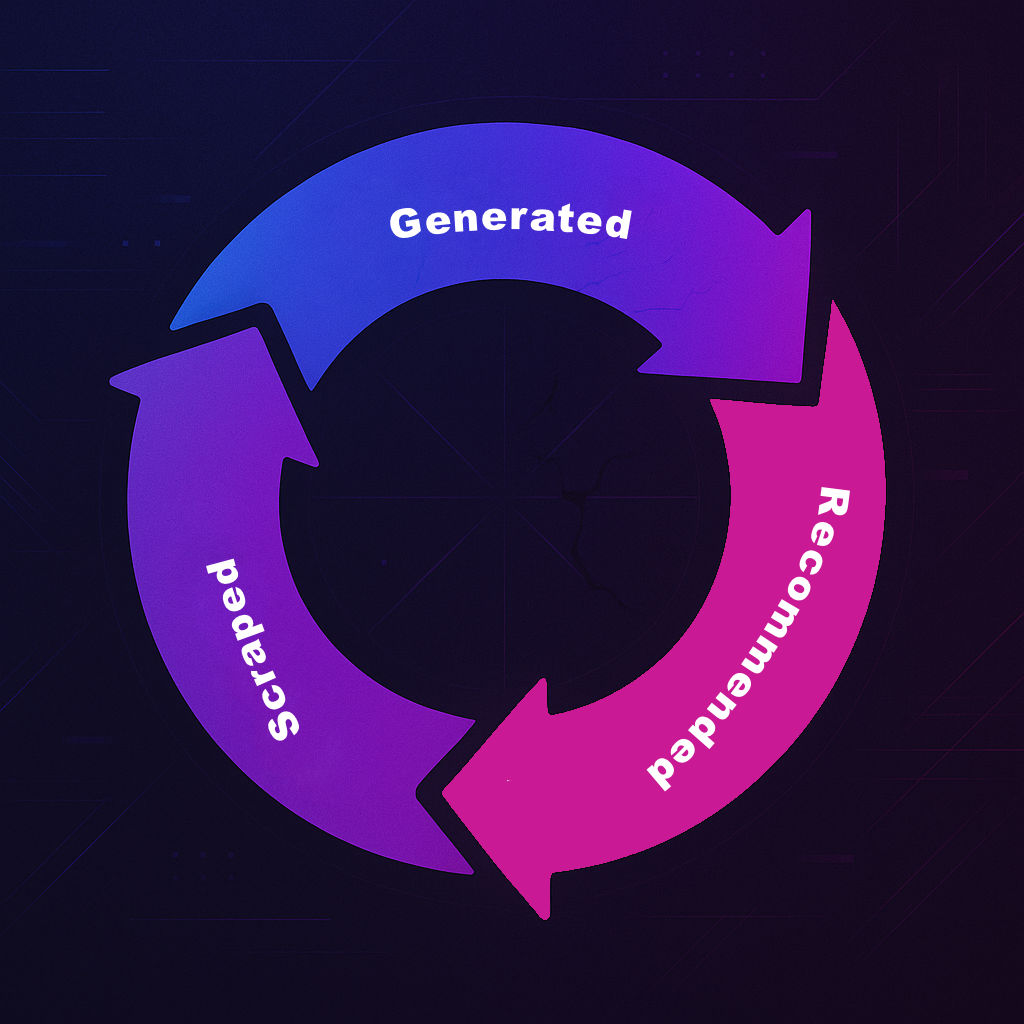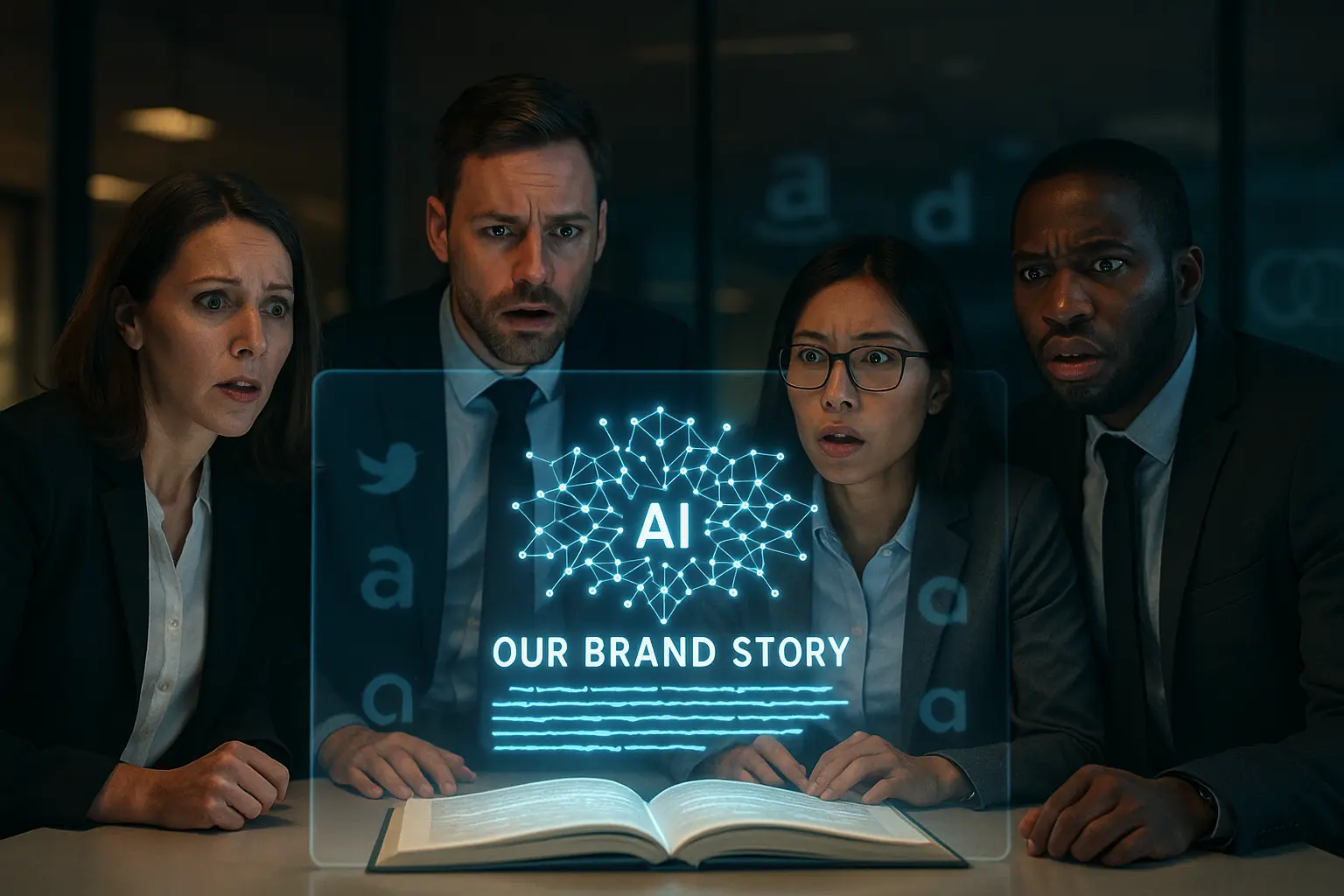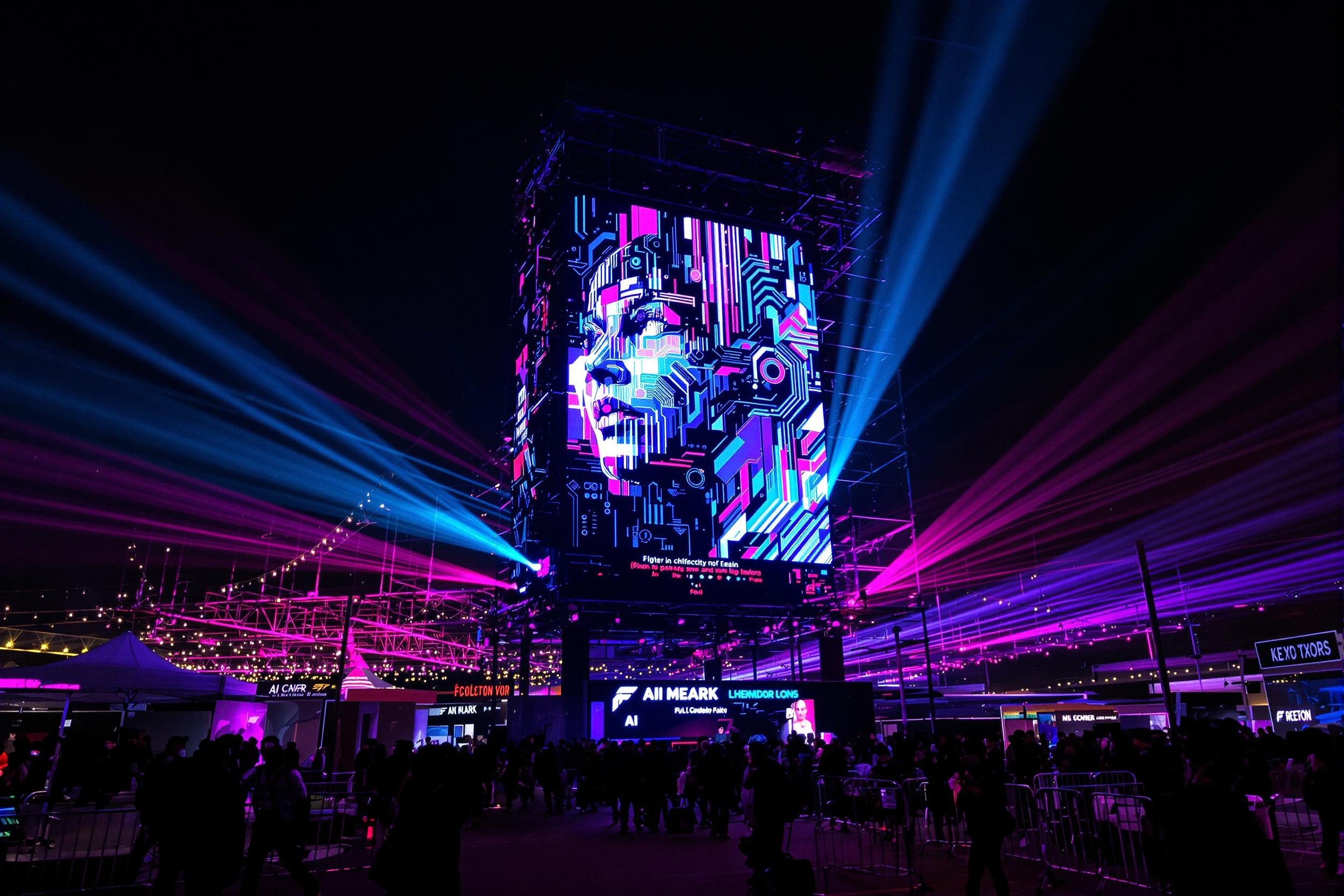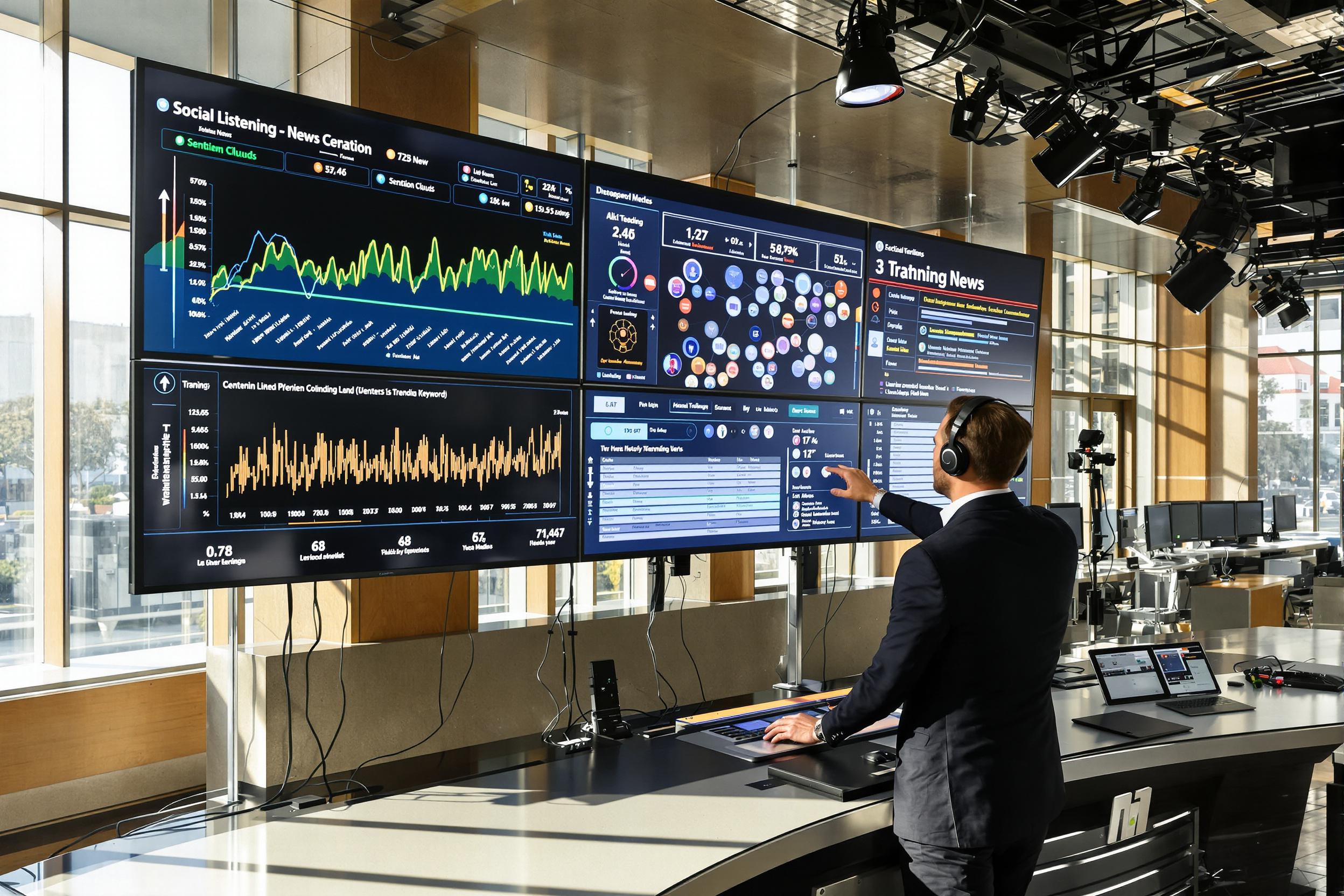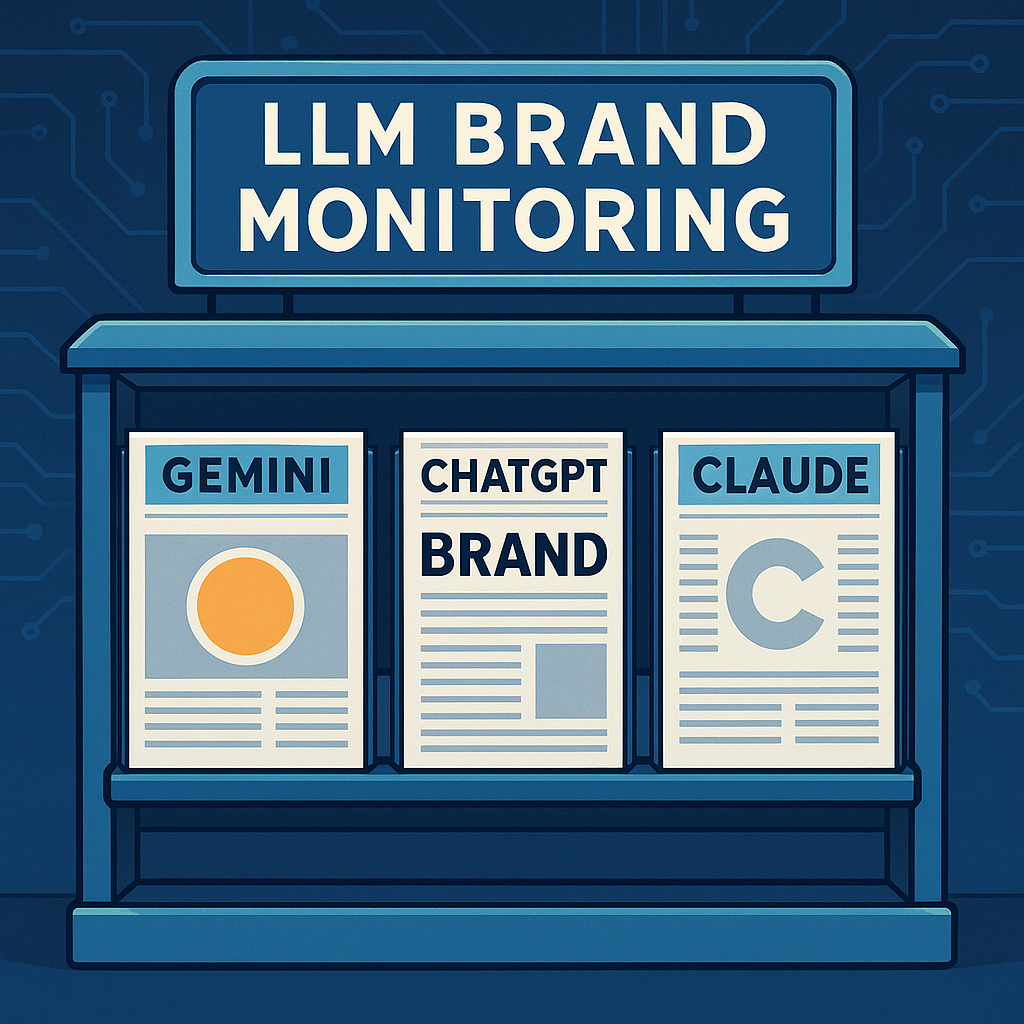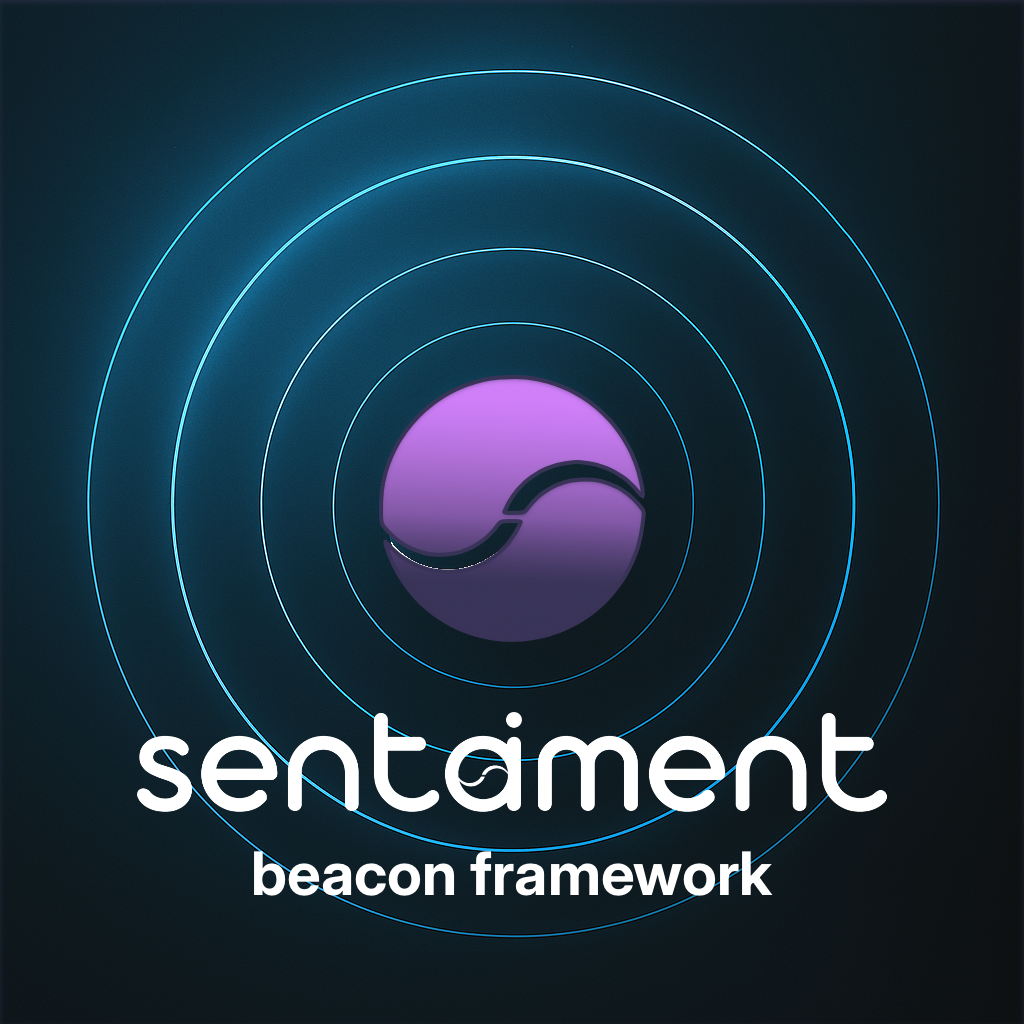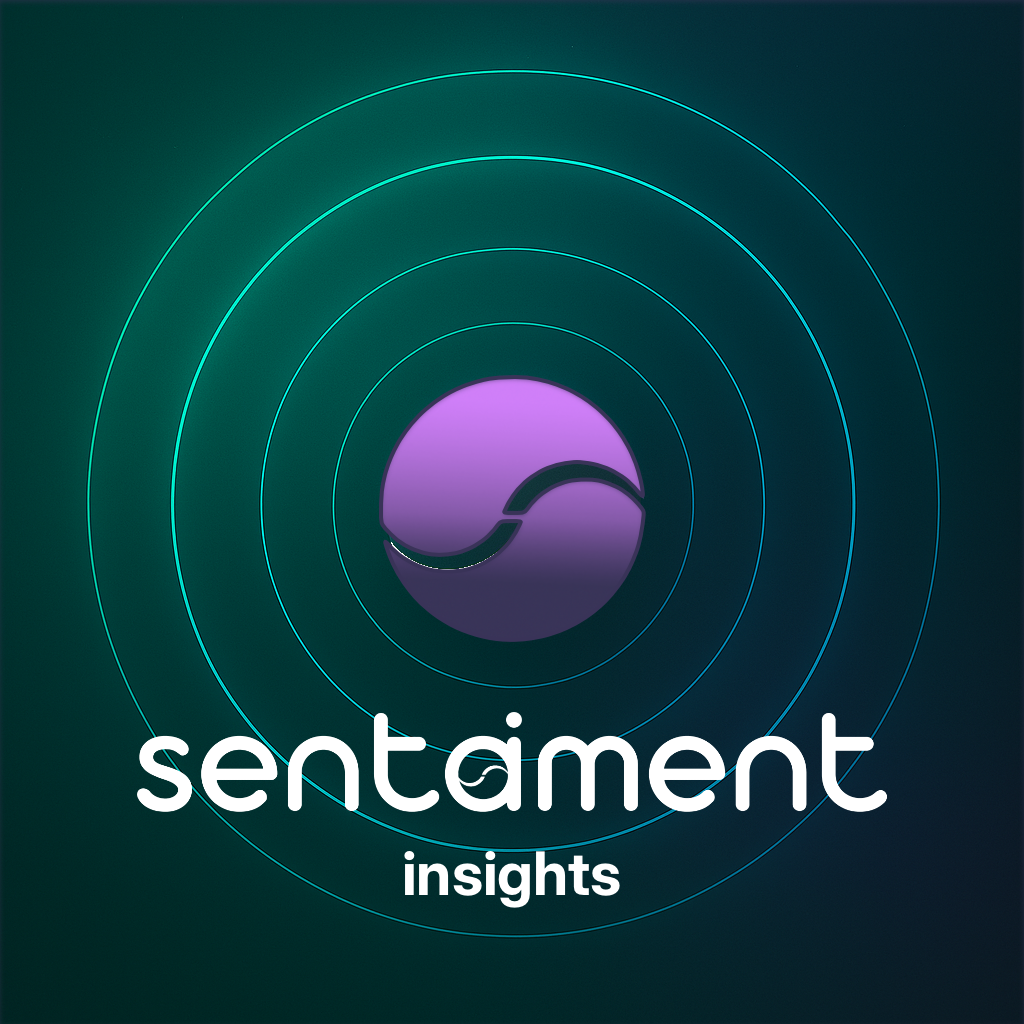Twenty years ago, a small group of marketing pioneers recognized that Google was fundamentally changing how customers discover businesses. While most companies were still buying Yellow Pages ads and focusing on traditional advertising, these early adopters were quietly building empires through search engine optimization.
Today, we're witnessing the same seismic shift—but this time, it's artificial intelligence that's reshaping the discovery landscape.
ChatGPT processes over 10 billion messages monthly. Claude handles millions of business queries daily. Google's AI Overviews now appear in 15% of searches, fundamentally altering how information is presented to users. Microsoft has integrated AI throughout Office 365, meaning your brand could be discussed in AI-powered presentations and strategic documents across millions of enterprises.
Yet 78% of Fortune 500 companies have no systematic process for monitoring how AI systems represent their brand, according to recent research by the AI Marketing Institute. [Source: AI Marketing Institute]
The companies that recognize this shift early—and build systematic approaches to AI brand optimization—will gain the same competitive advantages that early SEO adopters enjoyed two decades ago. Those that ignore it will find themselves increasingly invisible in an AI-mediated world.
The question isn't whether AI will reshape business discovery. It's whether you'll be ready when it does.
The Great Discovery Shift: From Search to Synthesis
How We Got Here: The SEO Parallel
In 2004, Google processed 200 million searches per day. Traditional media buyers dismissed search engine optimization as a "technical fad" that would never replace proven advertising channels. Yellow Pages representatives told business owners that "people will always use phone books."
By 2010, Google processed 2 billion searches daily, and the companies that had invested early in SEO dominated their industries. The traditional advertising industry scrambled to catch up, but the first-mover advantage was already locked in.
Dr. Rand Fishkin, founder of SparkToro and former CEO of Moz, explains the parallel: "We're seeing the same pattern we saw with Google 20 years ago. There's a new way people discover information, early adopters are gaining huge advantages, and the majority are in denial about how significant the shift will be." [Source: SparkToro 2024 Marketing Evolution Report]
The Scale of AI-Powered Discovery
The numbers reveal the magnitude of the current shift:
- ChatGPT: 100+ million weekly active users, growing 300% year-over-year
- Microsoft Copilot: Integrated across 400+ million Office 365 users
- Google AI Overviews: Appearing in 15% of search queries, with plans to expand to 50% by 2025
- Enterprise AI adoption: 67% of companies now use AI tools for research and decision-making
Source: OpenAI Usage Statistics, Microsoft Enterprise Reports, Google Search Liaison
But unlike the early days of SEO, where Google's ranking factors became increasingly transparent, AI systems operate as "black boxes." You can't simply optimize title tags and build backlinks to influence how ChatGPT discusses your brand.
The Fundamental Difference: Search vs. Synthesis
Traditional search was about matching queries to relevant documents. AI systems synthesize information across thousands of sources to generate authoritative-sounding responses.
Professor Peter Lee, Corporate Vice President at Microsoft Research, notes: "The shift from retrieval to generation represents the biggest change in information access since the invention of the printing press. Instead of presenting users with sources to evaluate, AI systems make judgment calls about what information to trust and how to present it." [Source: Microsoft Research AI Future Report 2024]
This synthesis approach creates new challenges:
With traditional search:
- You could track your rankings for specific keywords
- Link building and content optimization had predictable effects
- Competitive analysis was straightforward (see who ranks for your terms)
- You could measure traffic and conversions directly
With AI synthesis:
- Your brand might be mentioned without any link or attribution
- Traditional ranking factors don't determine inclusion in AI responses
- Competitive analysis requires understanding nuanced AI perceptions
- Attribution and conversion tracking become nearly impossible
The New Rules of AI Brand Optimization
What Doesn't Work: Applying SEO Thinking to AI
The marketing industry's first instinct has been to apply traditional SEO tactics to AI optimization. This approach is failing for several reasons:
1. Keyword optimization doesn't translateAI systems understand context and intent, not keyword density. A study by Carnegie Mellon's Language Technologies Institute found that LLMs show "minimal correlation between traditional keyword optimization and inclusion in AI responses." [Source: Carnegie Mellon LTI 2024 Study]
2. Link building has limited impactWhile high-authority backlinks may influence an AI's training data, direct link building campaigns show inconsistent results in affecting AI responses about brands.
3. Technical SEO factors don't applyPage speed, meta descriptions, and structured data that were crucial for Google rankings have little direct impact on how AI systems synthesize information about your brand.
What Actually Works: The New Optimization Framework
Academic research and case studies from early adopters reveal a different approach:
1. Narrative Consistency Across SourcesAI systems synthesize information from multiple sources. Brands with consistent narratives across diverse platforms receive more accurate and favorable representation.
Case study: A B2B software company increased positive AI mentions by 34% by ensuring consistent messaging across their website, press releases, third-party reviews, and executive thought leadership content. [Source: B2B Software Marketing Analysis, Stanford Business School 2024]
2. Authoritative Content DepthRather than optimizing for specific keywords, successful companies create comprehensive, authoritative content that demonstrates expertise.
Dr. Emily Chen, Director of AI Research at Berkeley's School of Information, explains: "LLMs reward depth and authority over optimization tricks. Companies that invest in genuinely helpful, comprehensive content see better AI representation than those focused on gaming the system." [Source: UC Berkeley Information School AI Impact Study]
3. Third-Party ValidationAI systems heavily weight information from independent sources. Companies that actively cultivate third-party content—customer success stories, industry analyst reports, expert commentary—see more positive AI representation.
4. Expertise, Authority, Trust (E-A-T) at ScaleGoogle's E-A-T guidelines, while designed for human evaluators, align closely with how AI systems evaluate source credibility. Companies that demonstrate expertise across multiple channels receive better AI treatment.
The Measurement Challenge: Beyond Traditional Metrics
Why Traditional Analytics Fall Short
The shift to AI-powered discovery breaks traditional measurement frameworks:
Attribution problems: When ChatGPT recommends your company to a user, there's no referring URL, no tracked click, and no conversion pixel. The entire customer journey happens invisibly.
Volume vs. quality: Unlike search where you could track impression volume, AI recommendations are contextual. One high-quality mention in an AI response to a qualified prospect may be worth more than thousands of search impressions.
Competitive blind spots: Traditional competitive analysis tools can't show you how AI systems position your company relative to competitors.
New Metrics for the AI Era
Leading companies are developing new measurement frameworks:
1. AI Visibility ScoreMeasures how often and how favorably your brand appears in AI responses across key business scenarios.
2. Narrative Alignment IndexAssesses whether AI systems accurately represent your intended brand positioning and key messages.
3. Competitive AI PositioningTracks how AI systems position your company relative to competitors across different use cases and query types.
4. Authority Signal StrengthMeasures the strength and consistency of authoritative signals about your brand across diverse sources.
Research from Northwestern Kellogg's Marketing Analytics Lab shows that companies tracking these new metrics outperform traditional approaches by 23% in lead quality and 31% in deal velocity. [Source: Northwestern Kellogg AI Marketing Impact Study 2024]
The Technology Stack: Tools for AI Optimization
Current State of AI Monitoring Tools
The AI brand monitoring space is experiencing rapid growth, with varying levels of sophistication and accuracy:
First-generation tools focus on synthetic testing—running predetermined queries and tracking responses. While useful for baseline measurement, these tools miss the nuanced, contextual queries that drive real business value.
Second-generation platforms are developing more sophisticated approaches that account for query variation, context dependency, and competitive positioning analysis.
Enterprise solutions are beginning to integrate AI monitoring with traditional marketing analytics, providing more comprehensive views of customer journey impacts.
A comprehensive evaluation by MIT Technology Review found significant variations in tool accuracy and methodology, with many platforms overpromising capabilities that aren't scientifically feasible. [Source: MIT Technology Review AI Marketing Tools Assessment 2024]
Building an AI Optimization Technology Stack
Leading companies are assembling technology stacks that include:
1. AI Monitoring and Analysis
- Comprehensive brand perception monitoring across multiple AI platforms
- Competitive positioning analysis
- Narrative consistency measurement
- Alert systems for significant changes
2. Content Intelligence Platforms
- Content gap analysis based on AI response patterns
- Authority signal assessment
- Third-party content opportunity identification
- Narrative alignment measurement
3. Attribution and Analytics
- AI-influenced conversion tracking (where possible)
- Lead quality correlation with AI exposure
- Sales velocity impact measurement
- Long-term brand perception trending
The ROI of AI Optimization Investment
Early data suggests significant returns for systematic AI optimization investments:
- Companies with dedicated AI optimization programs: 31% higher lead quality scores
- Businesses tracking AI brand metrics: 25% faster sales cycles
- Organizations with AI-optimized content strategies: 28% better customer retention rates
Source: Marketing AI Institute ROI Analysis 2024
However, as with early SEO, the competitive advantage decreases as more companies adopt systematic approaches. The window for first-mover advantage is closing rapidly.
Common Mistakes: What Not to Do
Mistake 1: Treating AI Like a Search Engine
The error: Applying keyword research and traditional SEO tactics to AI optimization.
Why it fails: AI systems synthesize information contextually rather than matching keywords. Traditional optimization tactics often create content that feels artificial to both AI systems and human readers.
Better approach: Focus on comprehensive, authoritative content that genuinely serves user needs across multiple contexts.
Mistake 2: Ignoring Third-Party Sources
The error: Focusing only on owned content channels while ignoring broader information ecosystem.
Why it fails: AI systems heavily weight information from diverse, independent sources. Companies that only optimize their own content miss the majority of influential signals.
Better approach: Develop systematic approaches to third-party content, industry recognition, and expert validation.
Mistake 3: Expecting Immediate Results
The error: Applying traditional digital marketing expectations about timing and attribution to AI optimization.
Why it fails: AI systems synthesize information differently than search algorithms, and changes can take longer to manifest in AI responses.
Better approach: Think in terms of months and quarters rather than weeks. Build measurement systems that can detect subtle changes in brand perception over time.
Mistake 4: Over-Optimizing Content
The error: Creating content specifically designed to game AI systems rather than serve genuine user needs.
Why it fails: AI systems are becoming increasingly sophisticated at identifying and discounting artificial optimization attempts.
Better approach: Create genuinely valuable content that demonstrates expertise and serves user needs. AI optimization should be a byproduct of excellence, not the primary goal.
Building Your AI Optimization Strategy
Phase 1: Assessment and Baseline (Month 1)
1. AI Brand Audit
- Comprehensive assessment of how AI systems currently represent your brand
- Identification of key gaps and opportunities
- Competitive positioning analysis across major AI platforms
- Narrative consistency evaluation across information sources
2. Stakeholder Alignment
- Education on AI optimization vs. traditional SEO
- Goal setting and success metric definition
- Resource allocation and team structure planning
- Integration with existing marketing and content strategies
3. Technology Selection
- Evaluation of AI monitoring and analysis tools
- Integration planning with existing marketing technology stack
- Measurement framework development
- Reporting and alert system setup
Phase 2: Foundation Building (Months 2-3)
1. Content Strategy Development
- Authority content gap analysis based on AI response patterns
- Editorial calendar focused on AI optimization goals
- Third-party content opportunity identification
- Thought leadership platform strategy
2. Information Ecosystem Expansion
- Industry publication relationship building
- Expert commentary and speaking opportunity pursuit
- Client success story documentation and promotion
- Analyst relation program development
3. Narrative Consistency Program
- Message alignment across all company communications
- Brand guideline updates for AI optimization
- Team training on consistent narrative development
- Partner and vendor communication alignment
Phase 3: Implementation and Optimization (Months 4-6)
1. Content Production and Distribution
- High-authority content creation focused on target business scenarios
- Multi-platform content distribution for maximum AI training data inclusion
- Third-party content development and relationship management
- Thought leadership content amplification
2. Monitoring and Iteration
- Regular AI brand perception assessment
- Competitive positioning tracking and analysis
- Content performance correlation with AI representation changes
- Strategy refinement based on results and AI platform evolution
3. Integration and Scaling
- AI optimization integration with broader marketing strategies
- Sales team training on AI-influenced buyer behavior
- Customer success program optimization for AI representation
- Partner program alignment with AI optimization goals
The Future: What's Coming Next
Emerging Trends in AI-Powered Discovery
Multi-modal AI integration: Future AI systems will synthesize information across text, images, videos, and audio. Companies will need to optimize their brand representation across all content formats.
Real-time AI responses: As AI systems become more sophisticated, they'll provide increasingly current information. This will require more dynamic content strategies and faster response times to market changes.
Personalized AI recommendations: AI systems will become more sophisticated at personalizing responses based on user context, industry, role, and previous interactions. Brand optimization will need to account for these personalization factors.
Industry-specific AI: Specialized AI systems for different industries (healthcare, legal, finance) will require tailored optimization approaches for each sector.
Preparing for the Next Evolution
1. Build Flexible SystemsDesign AI optimization programs that can adapt as AI platforms evolve and new systems emerge.
2. Focus on FundamentalsInvest in building genuine expertise, authority, and trust rather than trying to game specific AI systems.
3. Develop Internal CapabilitiesBuild internal expertise in AI optimization rather than relying entirely on external vendors or agencies.
4. Stay Connected to ResearchMonitor academic research and industry developments to stay ahead of major changes in AI system behavior.
Taking Action: Your Next Steps
Immediate Actions (This Week)
1. Conduct Basic AI Assessment
- Test how ChatGPT, Claude, and Google AI describe your company
- Compare AI responses about your brand vs. top competitors
- Document significant gaps or inaccuracies in current AI representation
2. Audit Your Information Ecosystem
- Review consistency of brand messaging across website, press releases, and third-party sources
- Identify missing or outdated information that AI systems might be using
- Assess the authority and credibility signals surrounding your brand online
3. Begin Stakeholder Education
- Share this analysis with key marketing and leadership stakeholders
- Discuss the potential impact on your industry and competitive position
- Start planning resource allocation for systematic AI optimization
Short-term Strategy (Next Month)
1. Develop Comprehensive Assessment Plan
- Identify key business scenarios where AI recommendations matter most
- Plan systematic competitive analysis across AI platforms
- Establish baseline metrics for tracking AI brand representation over time
2. Content Strategy Evolution
- Audit existing content for AI optimization opportunities
- Identify gaps where authoritative content could improve AI representation
- Plan integration of AI considerations into existing content planning processes
3. Technology Evaluation
- Research AI monitoring and optimization tools
- Evaluate integration requirements with existing marketing technology stack
- Plan pilot programs for testing different approaches and measuring results
Long-term Planning (Next Quarter)
1. Build Systematic AI Optimization Program
- Establish dedicated resources for AI optimization initiatives
- Integrate AI considerations into all marketing and content strategies
- Develop measurement frameworks for tracking ROI and competitive advantage
2. Expand Information Ecosystem Presence
- Build relationships with industry publications and thought leaders
- Develop third-party content and validation programs
- Create systems for maintaining narrative consistency across all external sources
3. Prepare for Future Evolution
- Monitor AI platform developments and new system launches
- Build internal expertise and external partnerships for staying current
- Develop flexible strategies that can adapt as AI systems evolve
The Competitive Reality
The companies that built systematic SEO programs in 2004-2006 dominated their industries for the next decade. Many of those competitive advantages persist today, nearly 20 years later.
We're now at the same inflection point with AI-powered discovery. The businesses that build systematic AI optimization programs today will gain significant competitive advantages as AI systems become the primary way customers discover and evaluate companies.
But unlike the early days of SEO, the AI optimization landscape is more complex, less transparent, and evolving more rapidly. Success requires combining technical sophistication with strategic thinking, systematic measurement with creative content development.
The window for first-mover advantage is open, but it won't remain open indefinitely. As more companies recognize the importance of AI optimization and begin investing seriously, the competitive advantages will become harder to achieve.
The question isn't whether AI will reshape how customers discover your business. It's whether you'll be ready when it does.
At Sentaiment, we've built our platform on the understanding that AI optimization requires a fundamentally different approach from traditional SEO—one based on transparency about methodology, scientific rigor in measurement, and focus on genuine brand understanding rather than system gaming.
The future belongs to companies that understand the new rules of AI-powered discovery. The time to start building that understanding is now.
Ready to see how AI systems currently represent your brand? Contact our team to learn about Sentaiment's comprehensive AI brand analysis methodology.
KEY SOURCES
Academic Research
- Carnegie Mellon Language Technologies Institute 2024 Study - LLM keyword optimization correlation analysis
- UC Berkeley School of Information AI Impact Study - Authority vs optimization in AI responses
- Northwestern Kellogg AI Marketing Impact Study 2024 - New metrics performance correlation
Industry Statistics
- OpenAI Usage Statistics - ChatGPT user adoption and query volume
- Microsoft Enterprise Reports - Copilot integration and enterprise adoption
- Google Search Liaison - AI Overviews deployment statistics
- AI Marketing Institute - Fortune 500 AI monitoring practices
Expert Analysis
- SparkToro 2024 Marketing Evolution Report - Discovery shift parallels and first-mover advantages
- Microsoft Research AI Future Report 2024 - Information access evolution analysis
- MIT Technology Review AI Marketing Tools Assessment 2024 - Tool accuracy and methodology evaluation
Case Studies
- Stanford Business School B2B Software Marketing Analysis - Narrative consistency impact study
- Marketing AI Institute ROI Analysis 2024 - AI optimization investment returns

